 |
|
|
HOME
|
US Navy -
ships
|
US Navy - air
units
|
USMC - air
units
|
International
Navies
|
Weapon Systems
|
Special Reports |
|
|
US Navy Wasp class Amphibious Assault Ship - LHD |
|
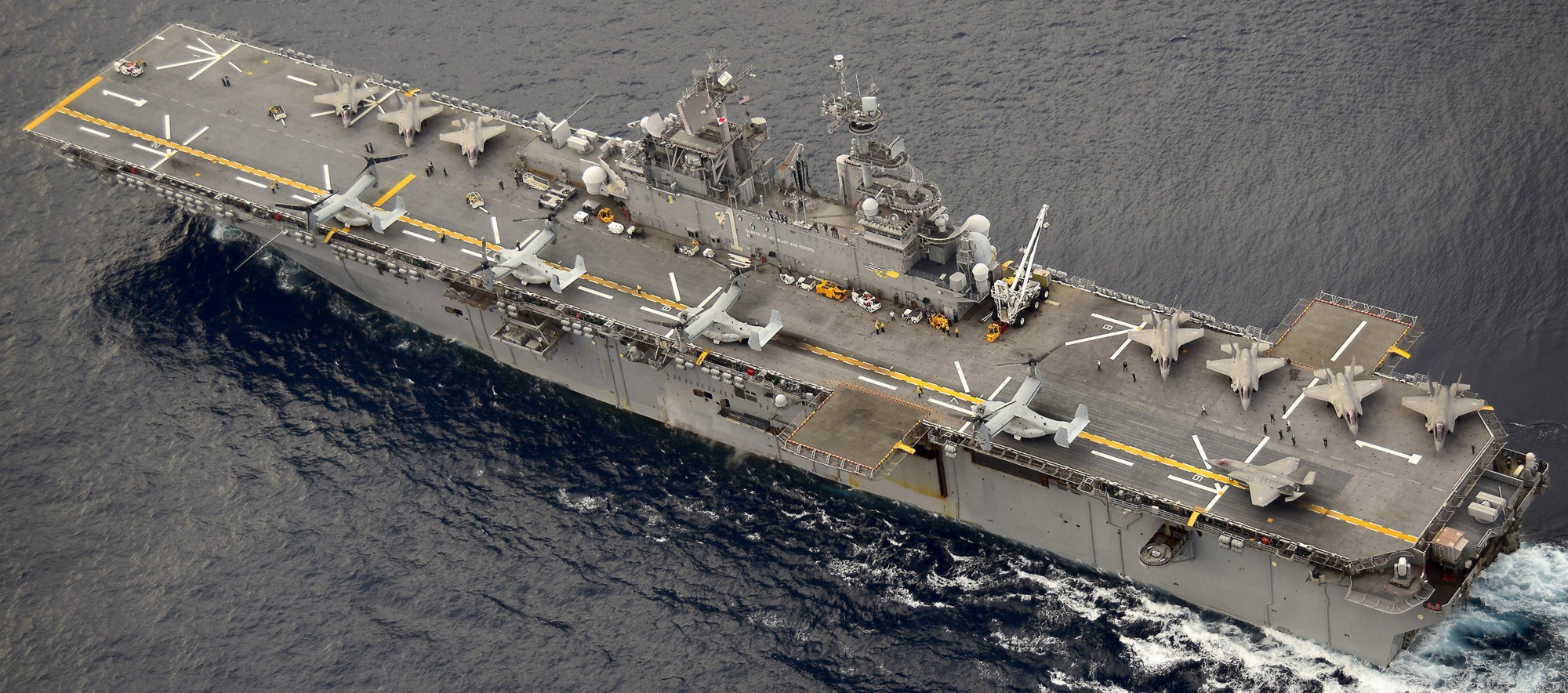 |
|
| 10/23 | |
| Ships: | |
|
LHD 1 USS Wasp (1989) LHD 2 USS Essex (1992) LHD 3 USS Kearsarge (1993) LHD 4 USS Boxer (1995) LHD 5 USS Bataan (1997) LHD 6 USS Bonhomme Richard (1998) LHD 7 USS Iwo Jima (2001) LHD 8 USS Makin Island (2009) |
|
| Specifications: | |
|
Displacement: 40500 long tons / 41150 t (full load) Length: 257 meters (843 ft) Beam: 31.8 meters (104 ft) Draft: 8.1 meters (27 ft) Speed: 22 knots (41 km/h) Range: 9500 NM (17600 km) at 18 knots (33 km/h) Complement: Ship's Company: 66 officers, 1004 enlisted Embarked Landing Force: 1687 Marines (+ 187 surge) Propulsion: LHD 1 - 7: 2 x boilers / 2 x geared steam turbines (70000 shp / 52000 kW total) 2 shafts, 2 propellers, 2 rudders LHD 8: 2 x GE LM2500 gas turbines (70000 bhp / 52000 kW total) 6 x Fairbanks Morse diesel generators (6 x 4000 kW) 2 x electric motors (2 x 5000 shp/3700 kW) 2 shafts, 2 propellers, 2 rudders
Aviation: full flight deck (80000 square feet) with island, 2 elevators / hangar deck Aircraft: AV-8B Harrier II / F-35B Lightning II / MV-22B Osprey / CH-53E Super Stallion UH-1Y Venom / AH-1Z Viper / MH-60S Knighthawk Landing force: well deck 266 x 50 feet (81 x 15 meters) for up to 3 x LCAC / 2 x LCU / AAV's Systems: AN/SPS-48 electronically scanned array 3D air search radar (or AN/SPS-52) AN/SPS-49 long range 2D air search radar AN/SPS-67 surface search radar AN/SPN-43 air traffic control radar AN/SPN-35 air traffic control radar Mk.43 Target Acquisition System (TAS) AN/SYS-2 integrated automatic detection and tracking (IADT) Mk.91 fire control system AN/URN-25 TACAN (tactical air navigation system) AN/SLQ-32 electronic warfare suite AN/UPX-24 identification friend or foe (IFF) Mk.36 SRBOC decoy launching systems AN/SLQ-49 chaff buoys AN/SLQ-25 torpedo decoy system |
|
|
The Wasp class is based on the preceding Tarawa-class design. The
design was modified to allow for the operation of AV-8B Harrier II
aircraft and Landing Craft Air Cushion (LCAC) hovercraft, making the
Wasp class the first ships specifically designed to operate these. Each Wasp-class ship has a displacement of 40,500 long tons (41,150 t) at full load, is 831 feet (253.2 m) long, has a beam of 104 feet (31.8 m), and a draft of 27 feet (8.1 m). For propulsion, most of the ships are fitted with two steam boilers connected to geared turbines, which deliver 70,000 shaft horsepower (52,000 kW) to the two propeller shafts. This allows the LHDs to reach speeds of 22 knots (41 km/h; 25 mph), with a range of 9,500 nautical miles (17,600 km; 10,900 mi) at 18 knots (33 km/h; 21 mph). The last ship of the class, USS Makin Island, was instead fitted with two General Electric LM2500 geared gas turbines. The ship's company consists of 1,208 personnel. Amphibious operations: The LHDs can support amphibious landings in two forms: by landing craft and by helicopter. In the 266-by-50-foot (81 by 15.2 m) by 28-foot (8.5 m) high well deck, the LHDs can carry three Landing Craft Air Cushion, twelve Landing Craft Mechanised, or 40 Amphibious Assault Vehicles (AAVs), with another 21 AAVs on the vehicle deck. The flight deck has nine helicopter landing spots and can operate helicopters and tiltrotors as large as the Sikorsky CH-53E Super Stallion and MV-22B Osprey. The size of the air combat element varies depending on the operation: a standard air combat element consists of six Harriers or six F-35B Lightning IIs and four AH-1W/Z Super Cobra/Viper attack helicopters for attack and support, twelve Ospreys and four Super Stallions for transport, and three or four Bell UH-1Y Venom utility helicopters. For a full assault, the air group can have a maximum of 22 Ospreys, while a Wasp operating in the sea control or "Harrier carrier" or "Lightning carrier" configuration carries 20 AV-8Bs or F-35Bs (though some ships of the class have operated as many as 24 Harriers), supported by 6 Sikorsky SH-60 Seahawk helicopters for anti-submarine warfare. Two aircraft elevators move aircraft between the flight deck and the hangar; in order to transit the Panama Canal, these elevators need to be folded in. Each ship is capable of hosting 1,894 personnel of the United States Marine Corps; almost the full strength of a marine expeditionary unit (MEU). A Wasp-class vessel can transport up to 30,800 square feet (2,860 m2) of cargo, and another 20,000 square feet (1,858 m2) is allocated for the MEU's vehicles, which typically include 5 M1 Abrams battle tanks, up to 25 AAVs, 8 M198 howitzers, 68 trucks, and up to 12 other support vehicles. A six-track internal monorail system and six 12,000-pound (5,400 kg) internal elevators are used to shift cargo from the cargo holds to landing craft in the well deck. Each Wasp-class ship has a hospital with 64 patient beds and 6 operating rooms. An additional 536 beds can be set up in an overflow casualty ward as needed. Armament and Systems: The armament of the first four Wasp class consists of two Mk.29 octuple launchers for RIM-7 Sea Sparrow missiles, two Mk.49 launchers for RIM-116 Rolling Airframe Missiles, three Mk.15 Phalanx CIWSs and four Mk.38 machine gun systems. The next four ships, Bataan, Bonhomme Richard, Iwo Jima, and Makin Island, have a slightly reduced weapons outfit compared to their preceding sister ships, with one Phalanx and one Mark 38 gun removed. Countermeasures fitted to the ships include four to six Mark 36 SRBOC chaff and decoy launchers, an AN/SLQ-25 torpedo decoy, AN/SLQ-49 chaff buoys, a Sea Gnat missile decoy, and an AN/SLQ-32 Electronic Warfare Suite. The sensor suite fitted to each ship comprises an AN/SPS-48 or AN/SPS-52 air-search radar backed up by an AN/SPS-49 air-search radar, an SPS-67 surface search radar, an AN/URN-25 TACAN system, along with several additional radars for navigation and fire control. - - - - - Wasp is composed of many Departments. The following are brief outlines of each department and their responsibilities. AIMD The mission of the Aircraft Intermediate Maintenance Department is to provide intermediate level maintenance, inspect, test, check, calibrate, lubricate and provide component repair to aircraft and support equipment, enhancing the effectiveness of embarked surface and aviation units. AIMD has the capability to test, repair, service and manufacture a large variety of aircraft and non-aircraft components. The level of this capability ranges from the small, delicate work performed by micro miniature repair technician to complex work performed by jet engine mechanics. In short, AIMDs four divisions are committed to unparalleled support, ensuring Wasp lives up to its reputation as the world's greatest warship. AIR The Air Department is responsible for the execution of flight operations that support Wasp's primary mission of landing elements of a Marine landing force in amphibious assault operations and is comprised mostly of Aviation Boatswain's Mate (Fuels) and Aviation Boatswain's Mate (Handler) personnel. COMBAT CARGO Combat Cargo is responsible for the preparation of operation orders, plans, directives, and correspondence in matters pertaining to the embarkation, loading, stowage, unloading, and debarkation of personnel, supplies, equipment and LFORM/cargo from ships under the control of the strike group commander. C5I The Command, Control, Communications, Computer, Combat and Information department is responsible for the operation and maintenance of command, control and communications systems, sensors, weapons and ship systems in support of amphibious and sea control missions. In essence, the C5I Department is responsible for ensuring the ship can fight and defend itself when called upon to do so. CHAPLAIN The mission of the Chaplain Department is to provide and facilitate worship services, bible studies and religious education for Sailors of all faith groups. The Department also provides pastoral counseling to Sailors, visits Sailors in the workspaces throughout the ship and operates the library and multimedia resource center for Sailors and Marines. DECK Hard working, dedicated, motivated. The department is divided into three divisions and is led by the First Lieutenant and the Ship’s Bos’n. Deck always takes pride in its work. Major evolutions include manning stations during underway replenishment and connected replenishment, well-deck operations featuring Landing Craft Air Cushions, Landing Craft Units, small boat operations as well as playing an important role in mooring and anchoring the ship. Deck Department personnel report to quarters every morning knowing that “it’s a great day to be in deck.” DENTAL The Dental Department provides primary dental care and emergency capabilities to the ships crew and embarked troops. Consisting of three treatment rooms, LHD-1 has the most extensive dental support capability of any combatant in the world. ENGINEERING The Engineering Department is composed of the Damage Controlmen, Electrician's Mates, Engineman, Hull Maintenance Technicians, Machinery Repairmen and Machinist Mates. Engineering is responsible for the ship's propulsion plant as well as providing water for the crew and embarked Marines. Engineering also produces all the ship's electricity, maintains and operates the air conditioning and refrigeration plants, and maintains the ship's laundry facilities and galley equipment. Engineering is also responsible for firefighting and damage control efforts on board Wasp. EXECUTIVE The Executive Department is responsible for providing administrative support, legal assistance, security, personnel and career counseling services. MEDICAL With six operating rooms, state-of-the-art digital X-ray capabilities, fully functional laboratory, blood bank, 14-bed intensive care unit, 46-bed patient care ward, four battle dressing stations and the best trained medical staff in the fleet, the Medical Department is ready to support any mission Wasp undertakes. Medical maintains a high level of readiness through continual training of medical personnel in their respective areas of expertise, and the training of ship’s company in basic first aid and life-saving techniques. LHD-1 has the most extensive medical support capability of any combatant in the world. NAVIGATION Quartermasters are responsible for safely navigating the ship. They are involved in all aspects of voyage planning and advise the commodore, his staff, and the commanding officer in matters relating from open ocean transits to harbor piloting. The Quartermaster of the Watch stands watch on the bridge and meticulously ascertains the ship’s position using Global Positioning System, radar, celestial, and visual navigation aids. They are the primary assistant to the Officer of the Deck on all matters related to safely navigating the ship. OPERATIONS Operations Department is the purpose of Wasp. Any mission that Wasp undertakes is organized and planned out by the Operations Department. Air Traffic Control, Combat Information Center, Joint Intelligence Center, Cryptological Information and Meteorology as well as Public Affairs, shipboard television programming and photographic and print shop services are all part of each and every mission performed by Wasp and provided by the Operations Department. SAFETY The Safety Department is dedicated to the premise that although Sailors operate in an inherently dangerous environment, they can eliminate or reduce the hazards associated with their work by following established guidelines and safety precautions and ensuring all hands are properly trained. Safety also coordinates interdepartmental safety education, training and General Military Training through the Shipboard Information Training and Entertainment System. SUPPLY The mission of Supply Department is to provide the ship with the tools and parts necessary to complete any mission. This equipment includes food, fuel, office supplies, repair equipment and many other necessities. Supply Department is the 'oil' that keeps the 'gears' turning on board Wasp. TRAINING The Training Department strives to enable Sailors to properly manage, coordinate and monitor professional and personal training in order to increase the overall readiness of Wasp. This is accomplished by ensuring all schools, Personnel Qualification Standard, GMT and command indoctrination requirements are scheduled, completed and documented. Additionally, Training provides counseling and sound advice to assist Sailors in earning or working toward a college degree while ashore or deployed through the Navy College Program for Afloat College Education and the use of a video teletraining system. some interesting facts: Number of compartments: 1,426 Number of Anchors: 2 standard Navy stockless Weight of each anchor: 40,000 lbs Length of each anchor chain: 1,170 Feet (356 meters) Weight of each anchor chain link:155 lbs Gallons of water made each day: 200,000 Cargo storage space: 100,000 Cubic Feet Vehicle storage space: 22,000 Square Feet Well deck: 13,000 Square Feet Number of Landing Craft Air Cushion (LCAC): 3 Number of Landing Craft Utility (LCU): 2 Number of meals served each day: 7,620 Sodas consumed each day: 1,920 Number of eggs consumed each day: 770 fresh - 300 lbs frozen Fresh vegetables consumed each day: 125 lbs Fresh fruit consumed each day: 370 lbs Meat consumed each day: 2,200 lbs source: wikipedia + US DoD |
|
|
class + detail images (for more images go to the individual ship pages) |
|
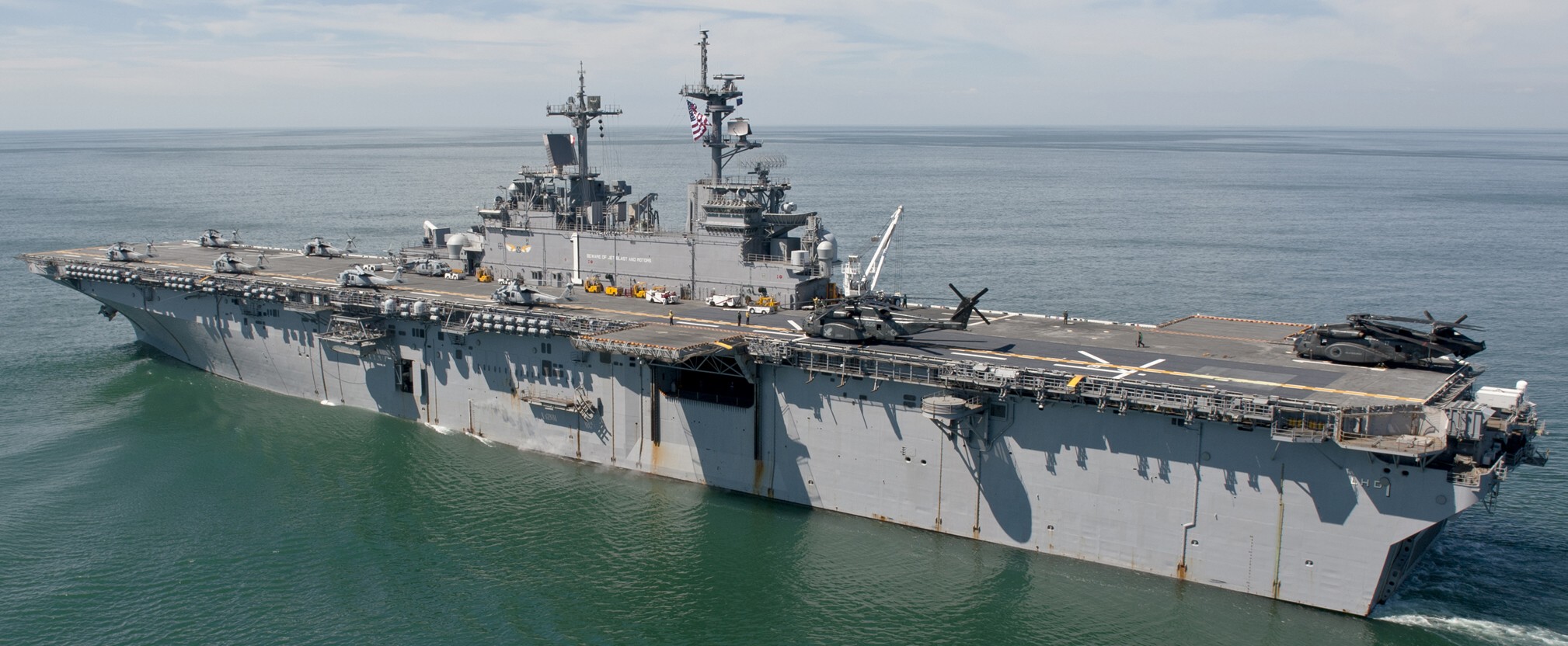 LHD 1 USS Wasp 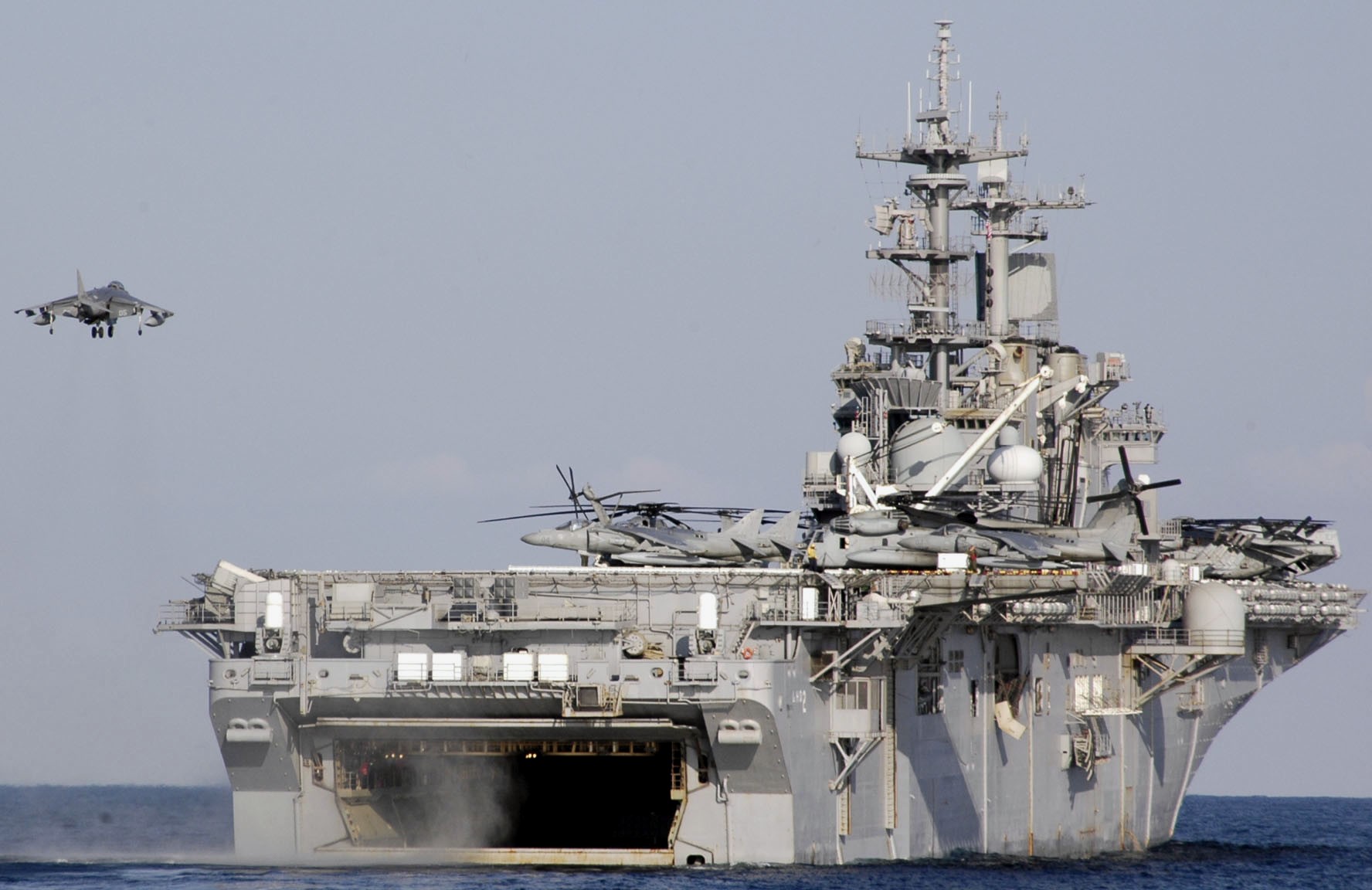 LHD 2 USS Essex 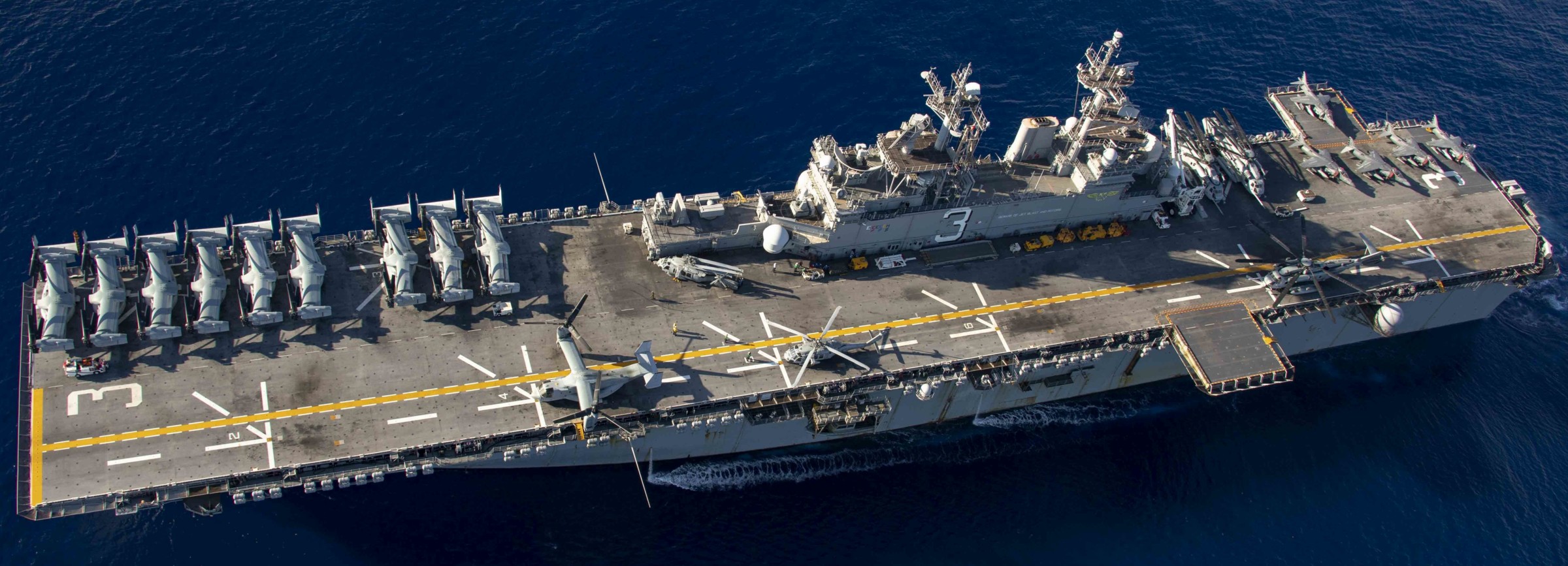 LHD-3 USS Kearsarge 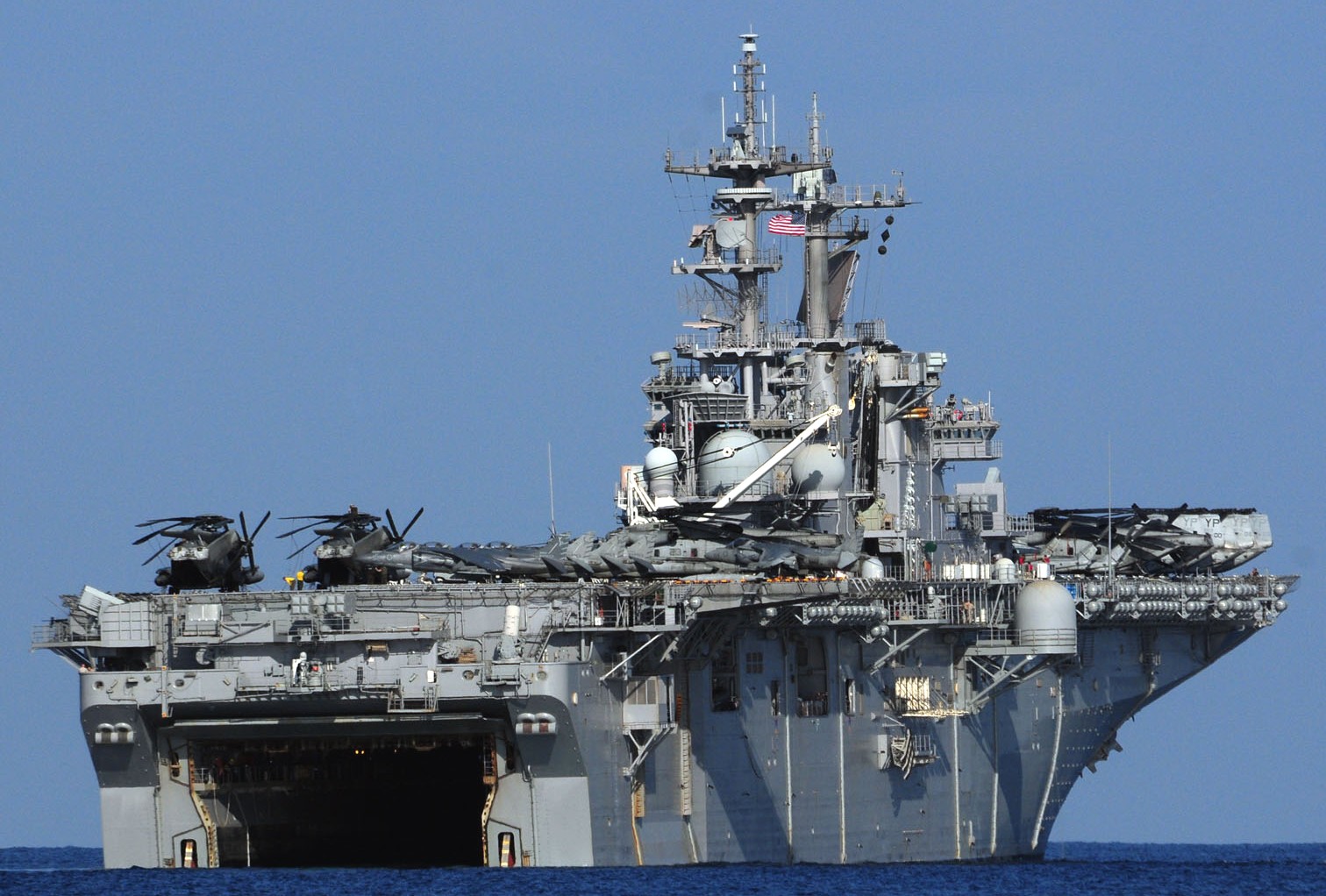 LHD 4 USS Boxer 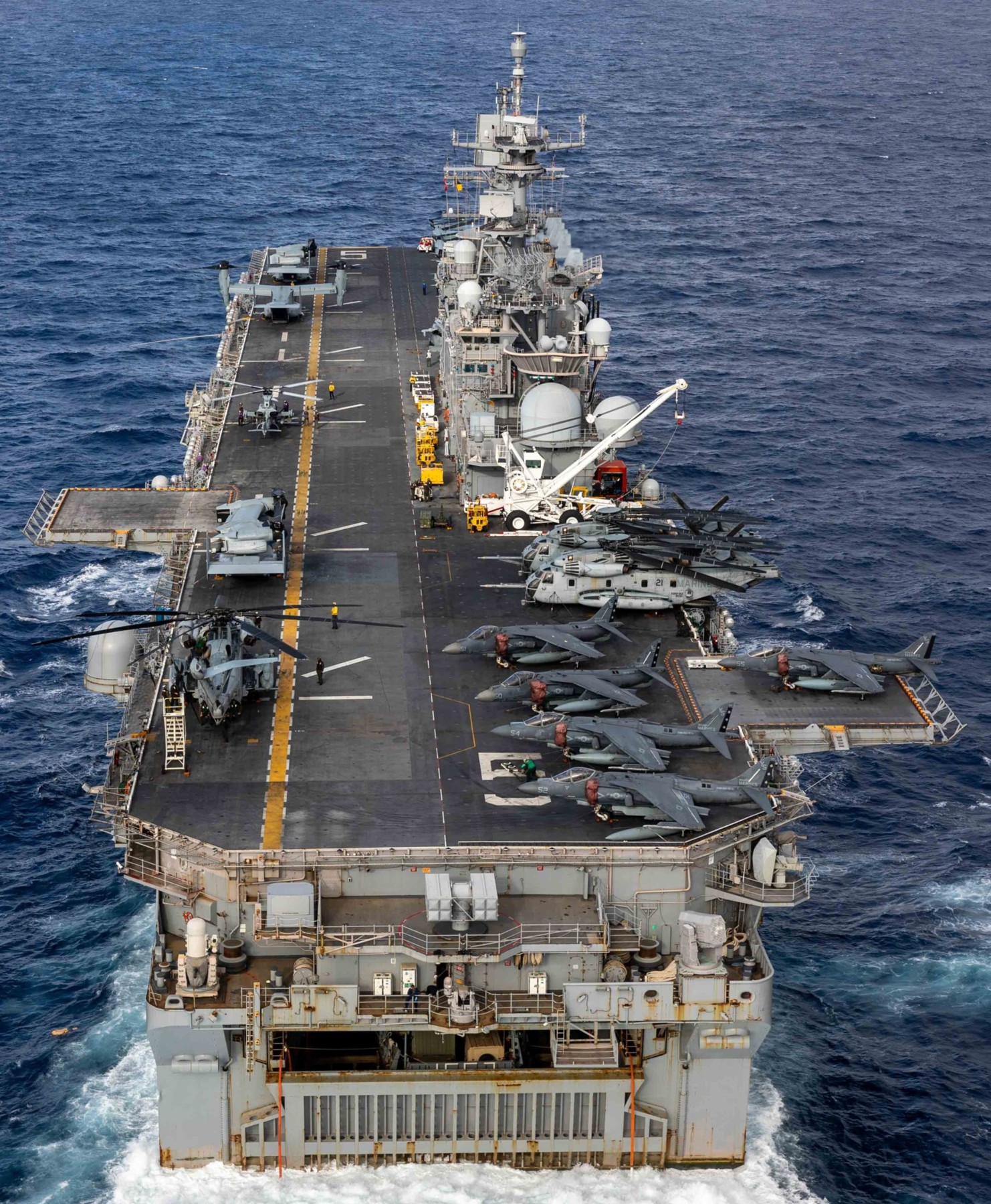 LHD 5 USS Bataan 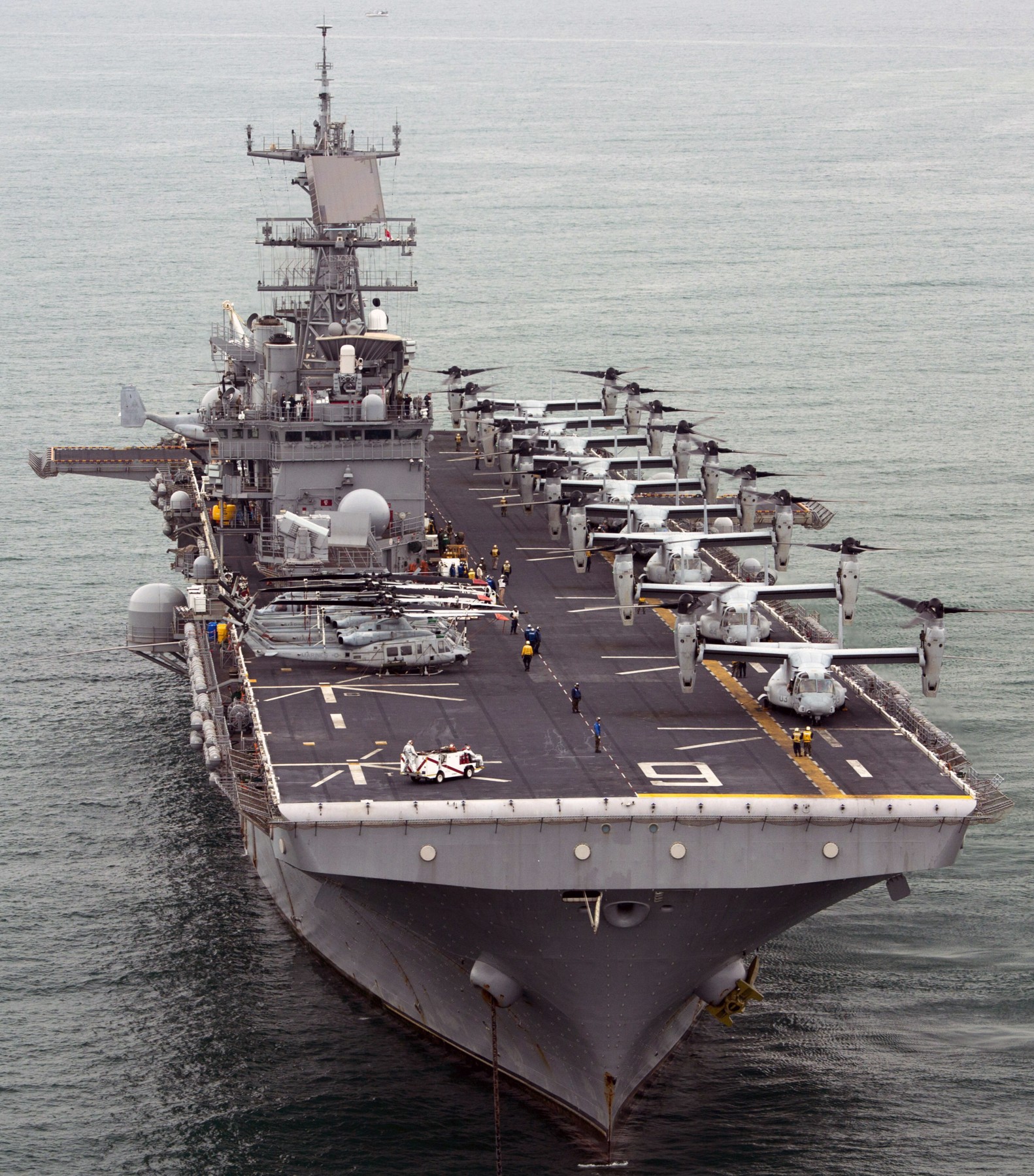 LHD 6 USS Bonhomme Richard 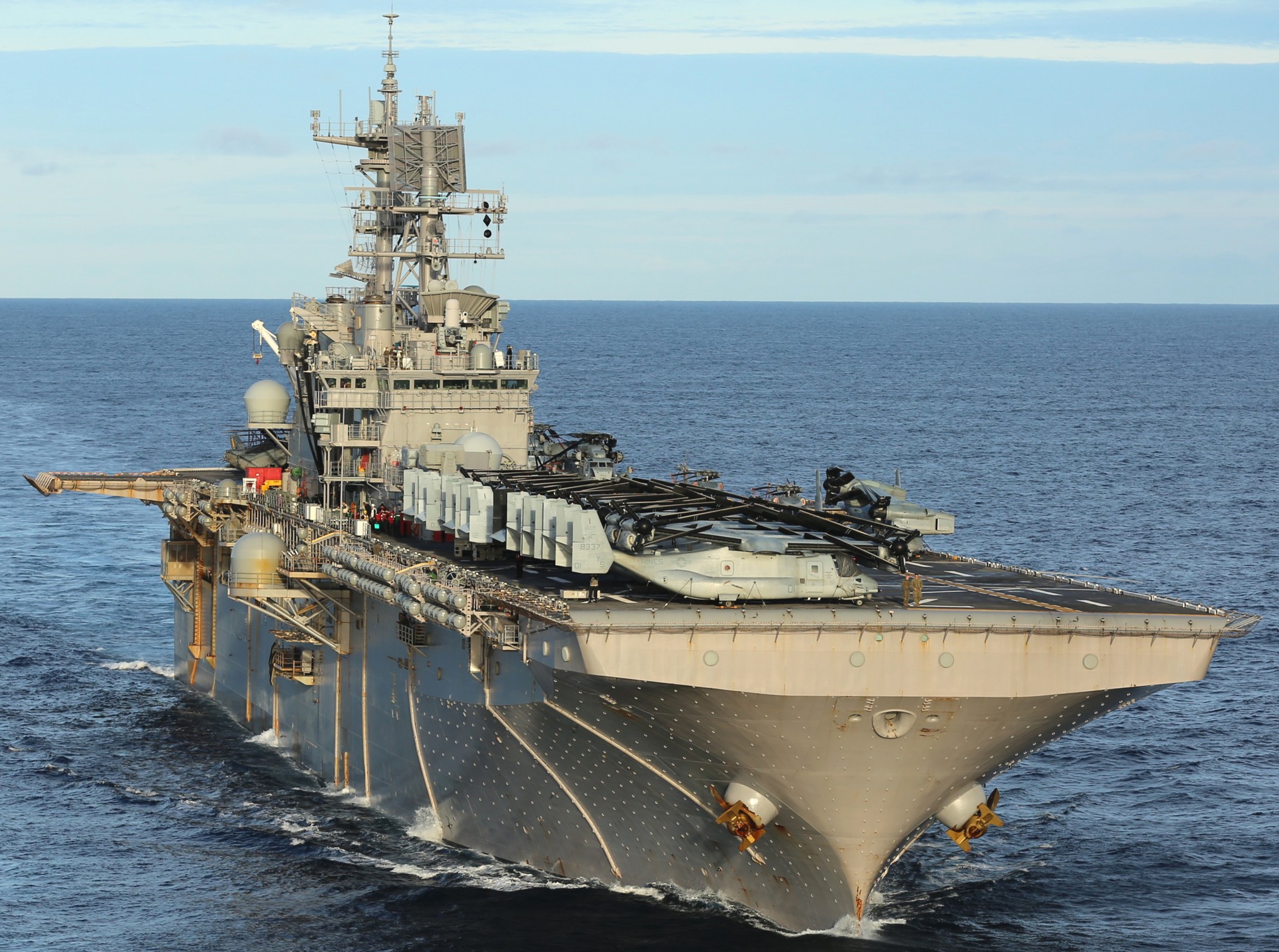 LHD 7 USS Iwo Jima 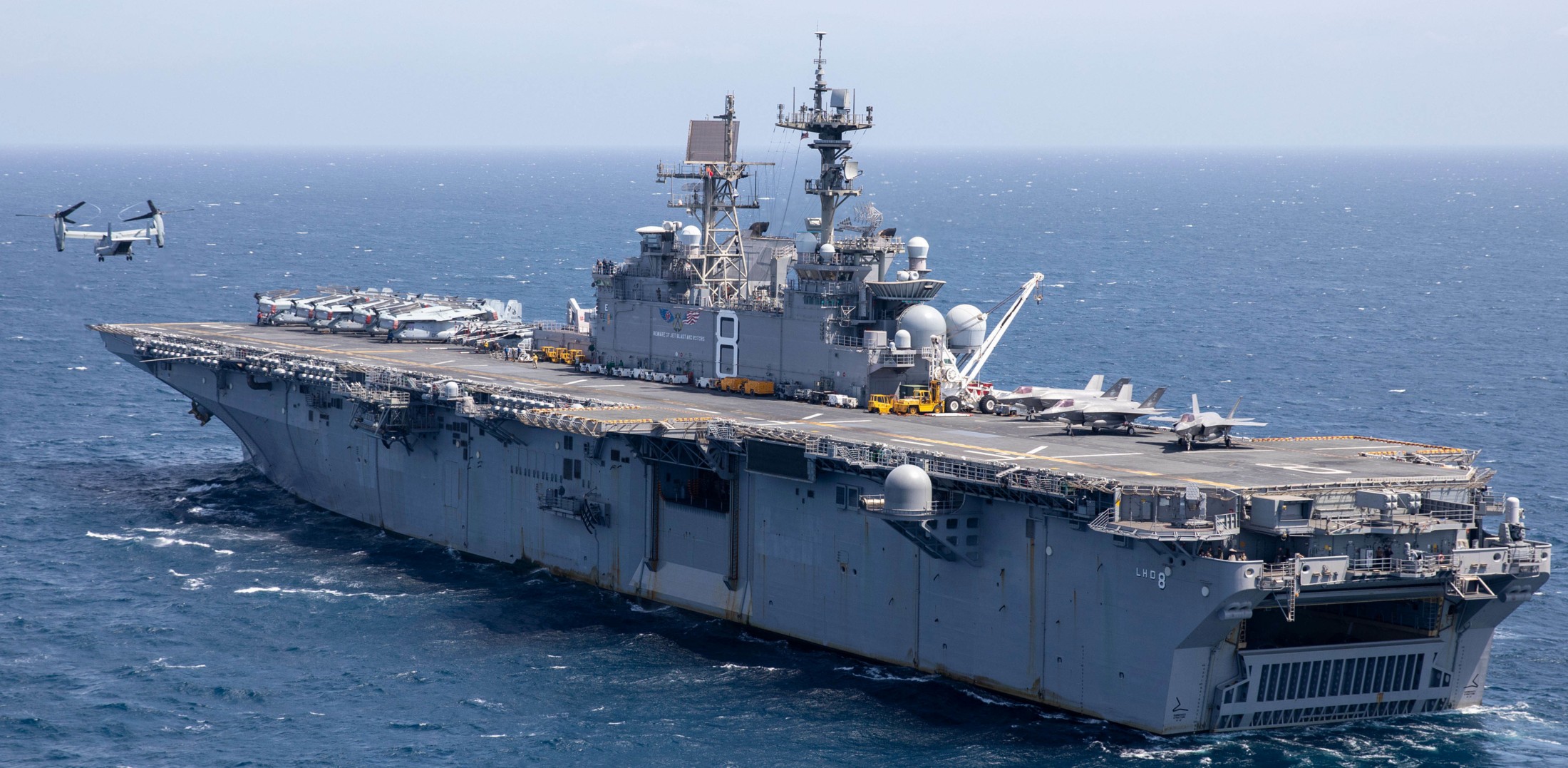 LHD 8 USS Makin Island 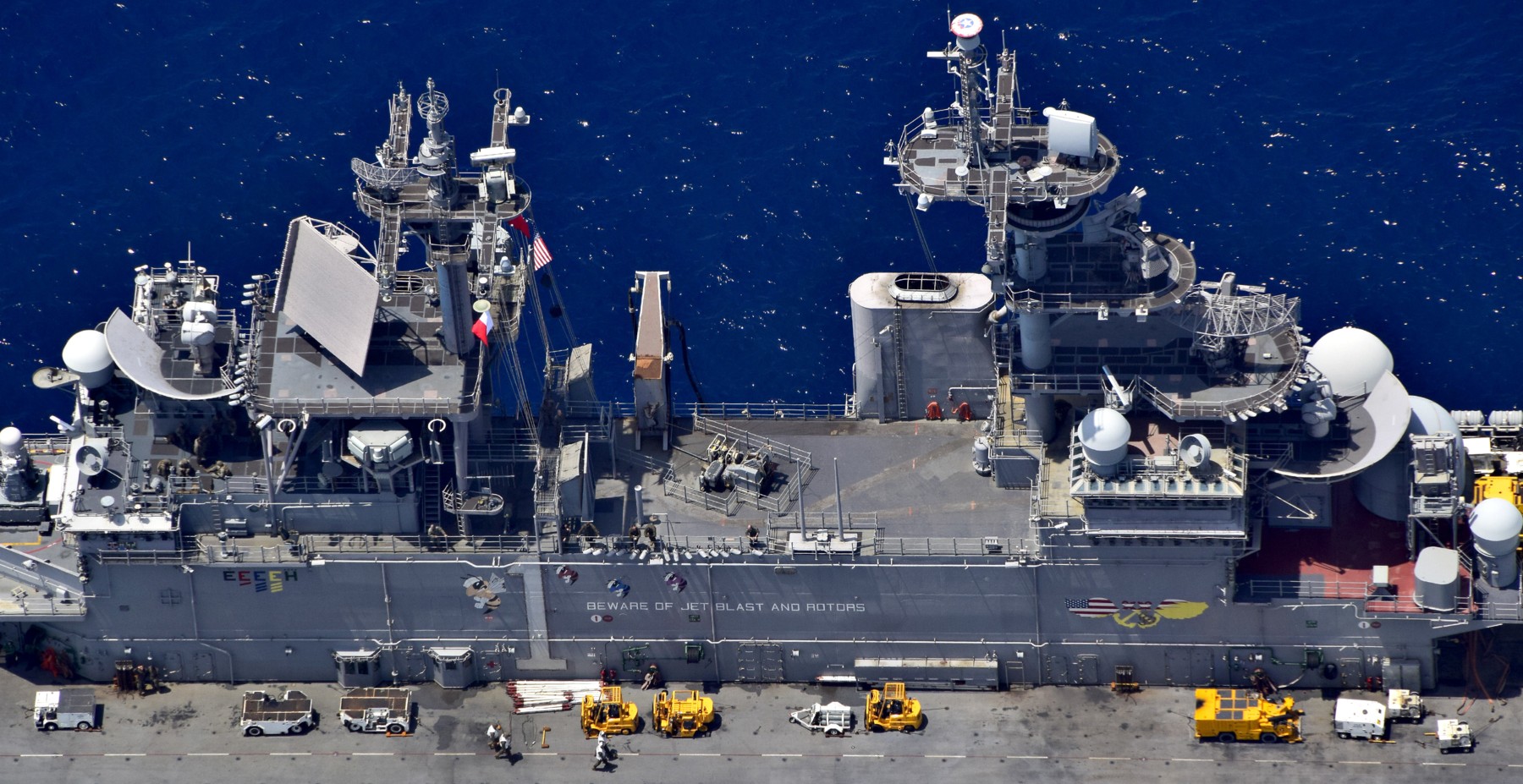 mast and antenna details 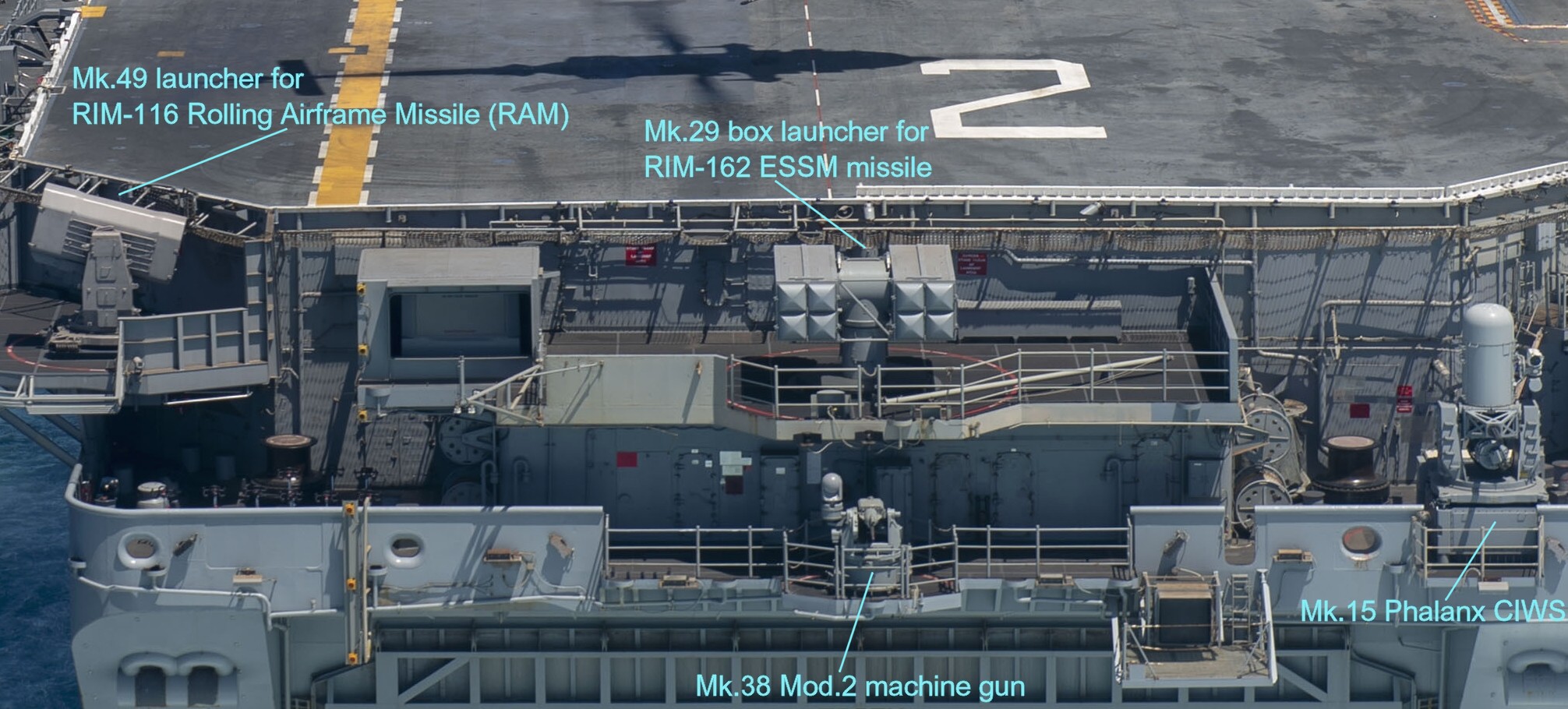 armament details 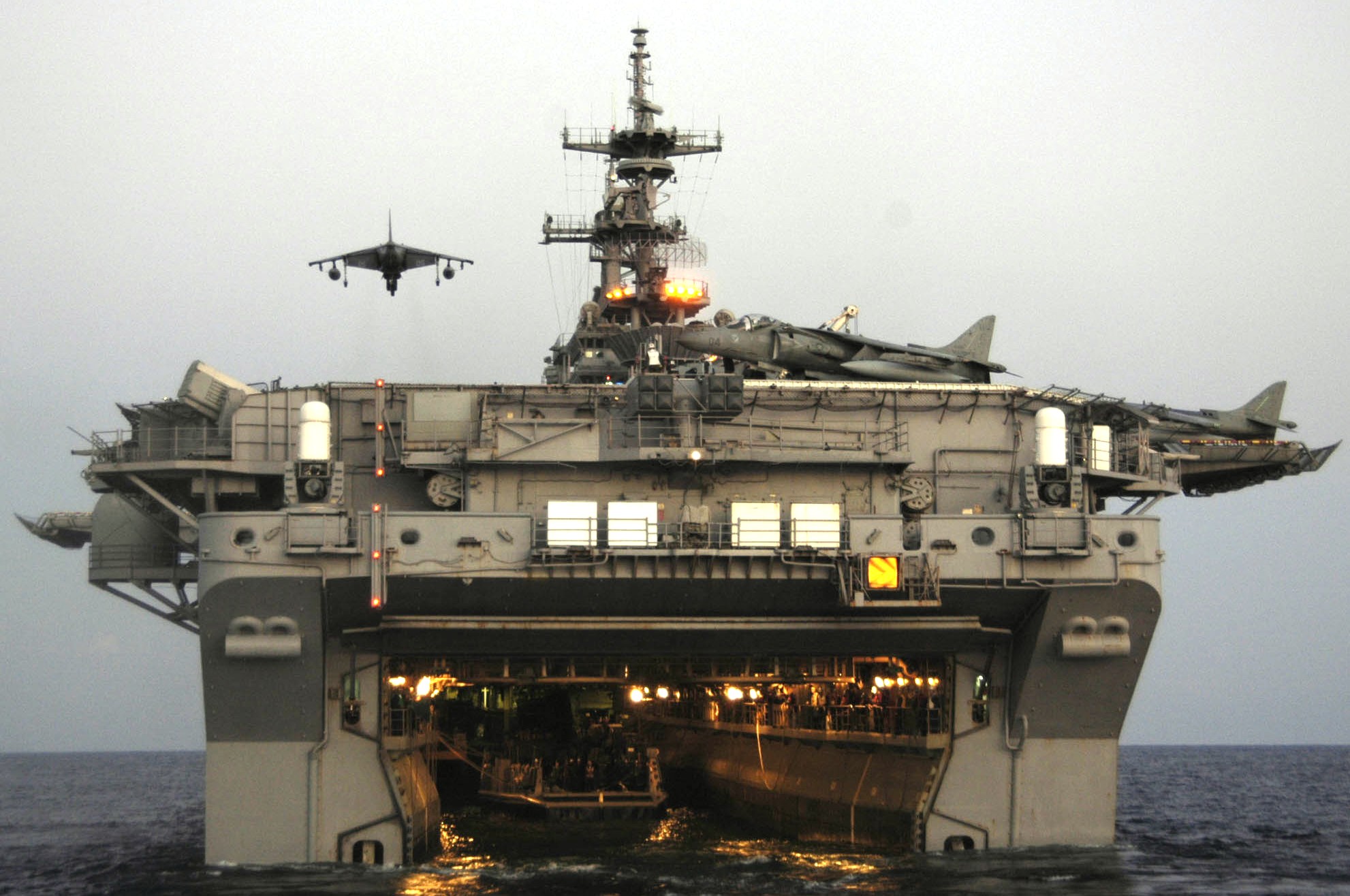 flight deck and well deck operations 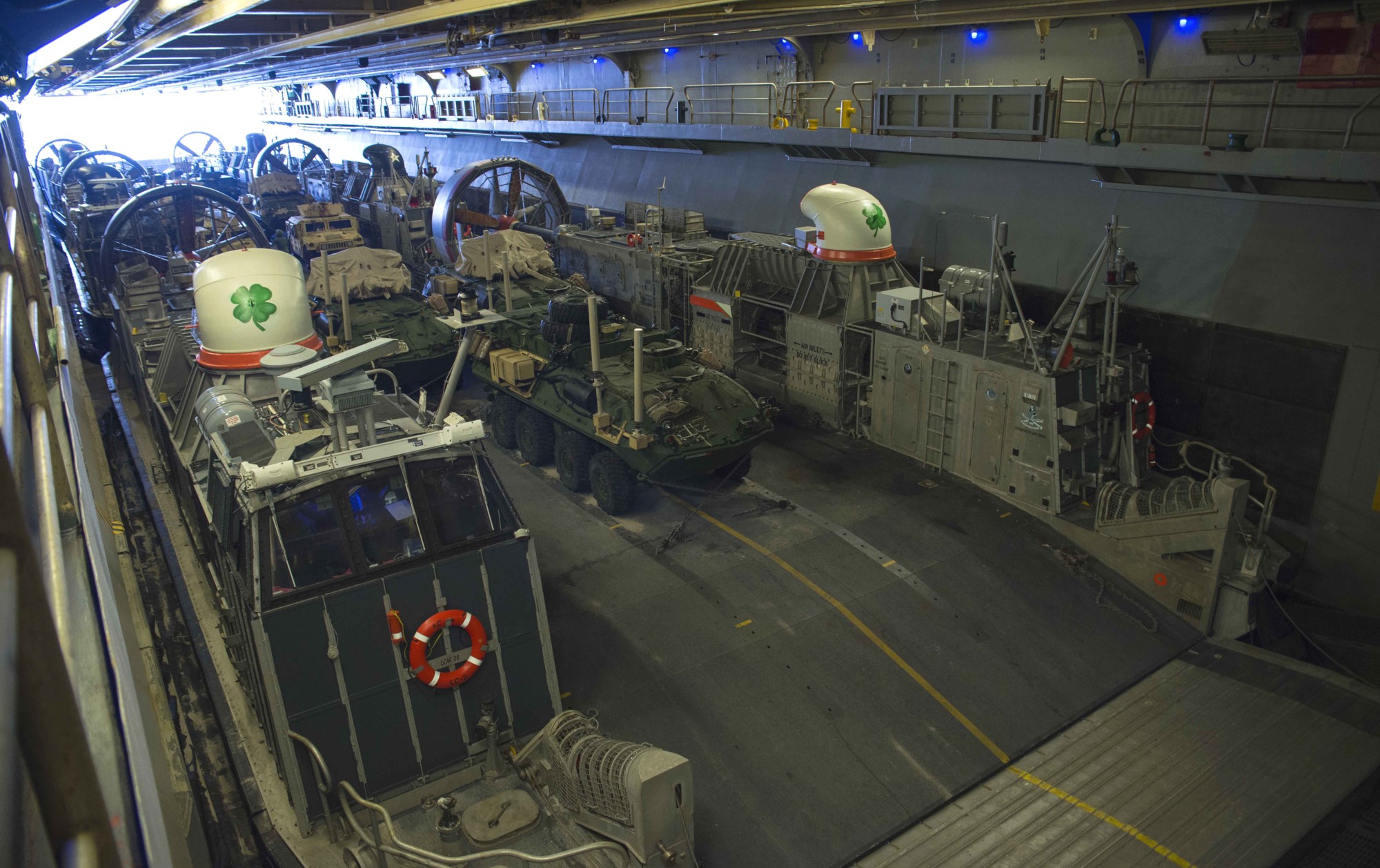 well deck with 3 landing craft air-cushion (LCAC) 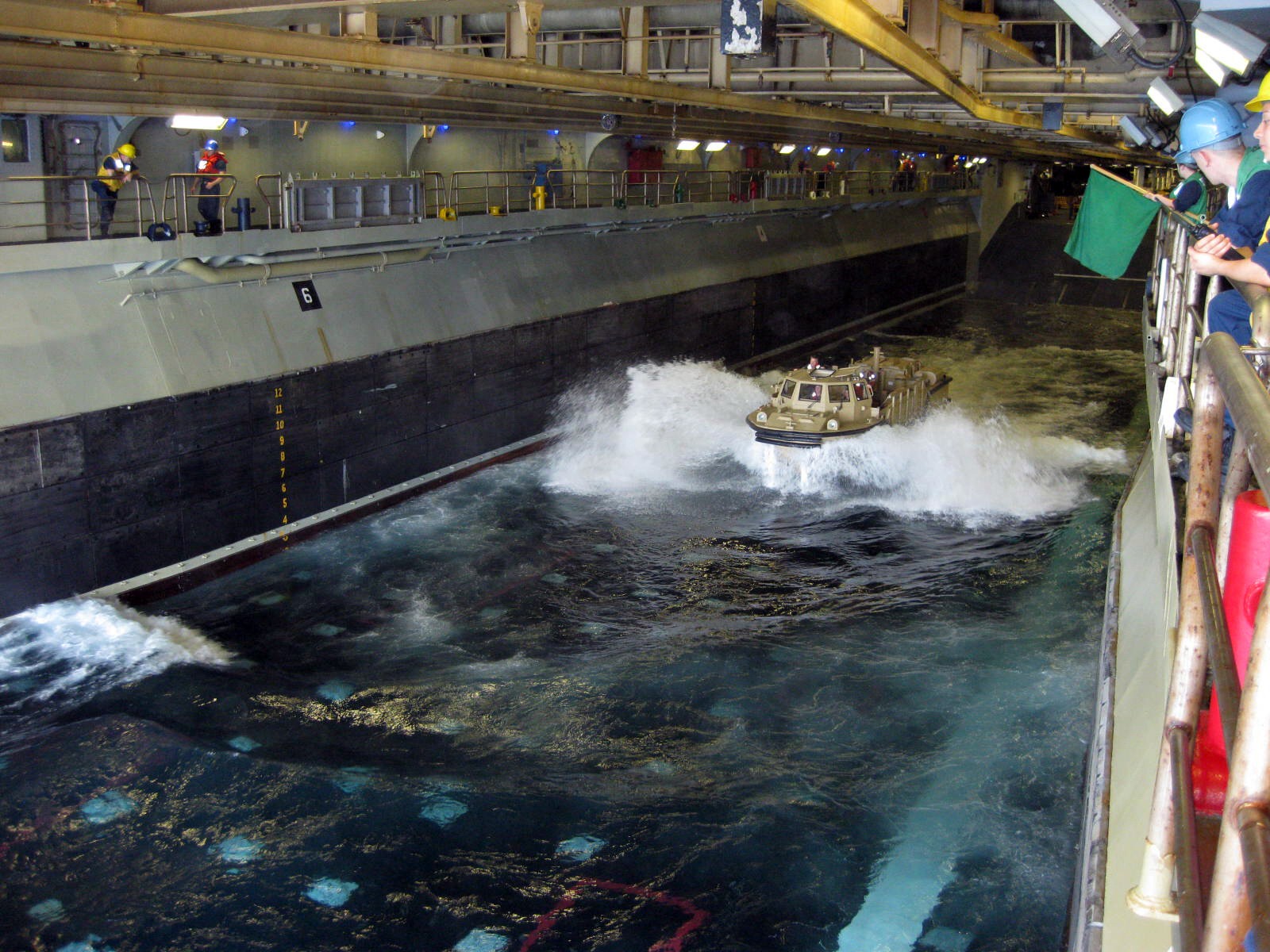 flooded well deck with LARC 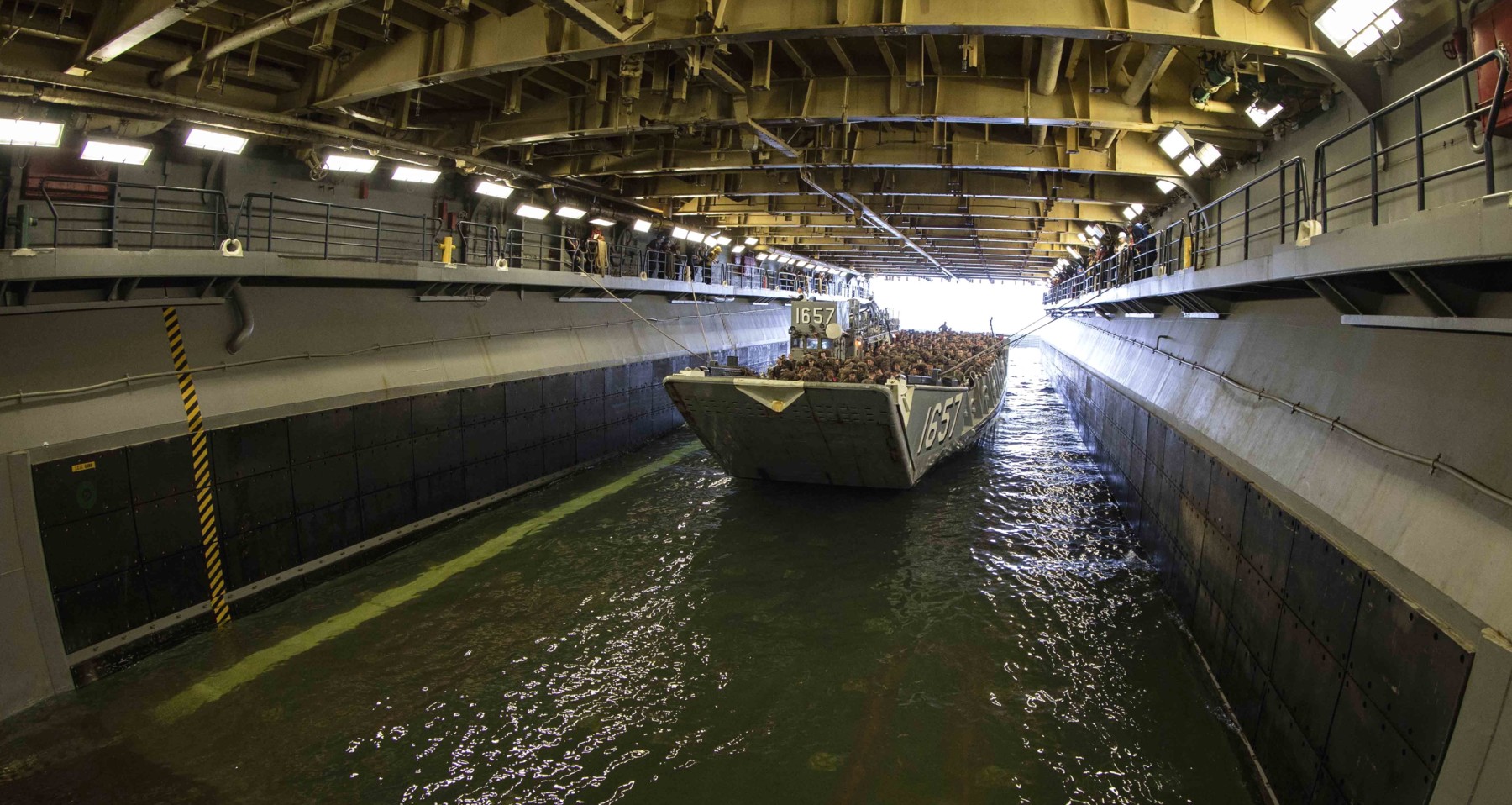 landing craft, utility (LCU) operations 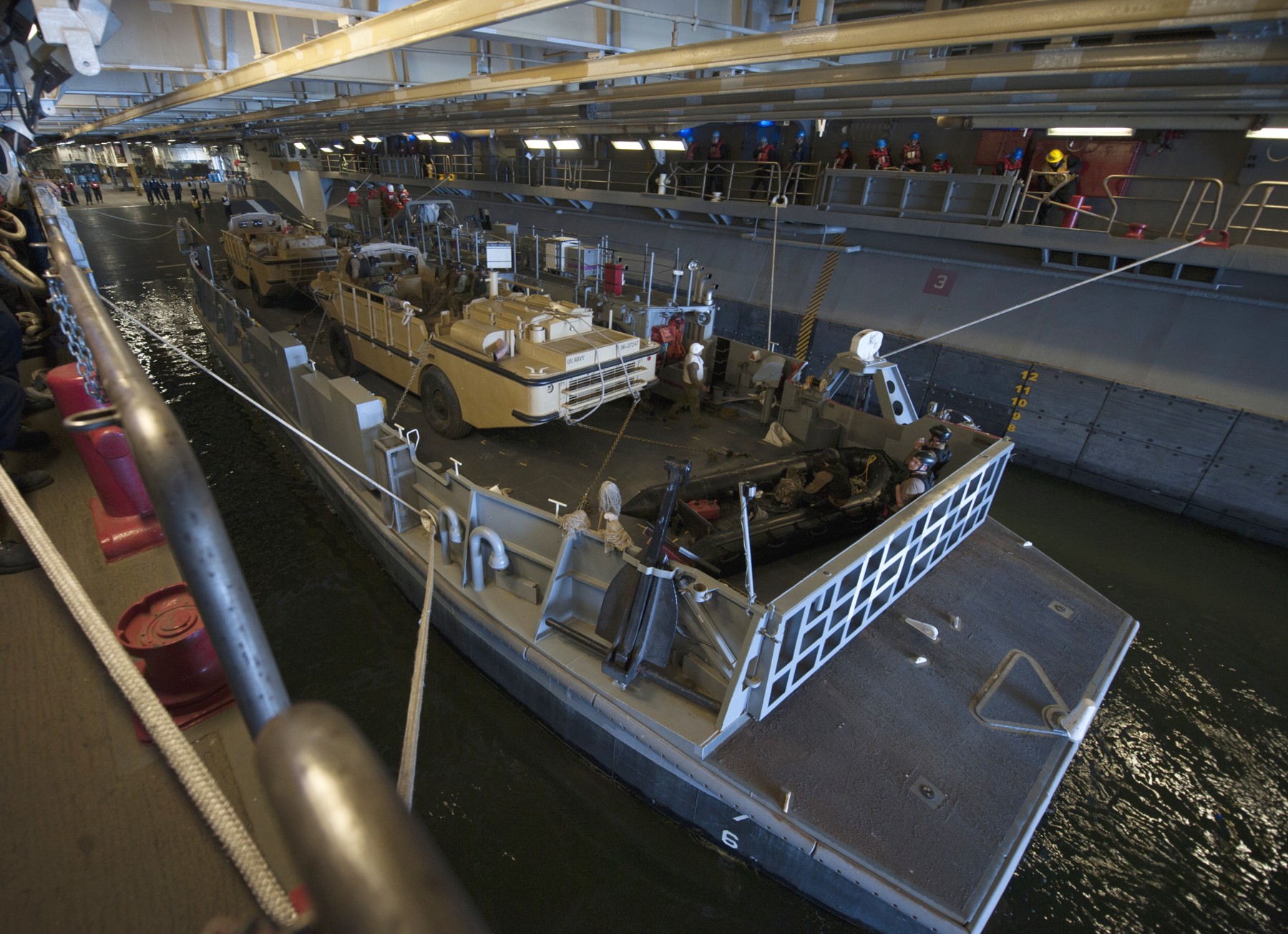 landing craft, utility (LCU) operations 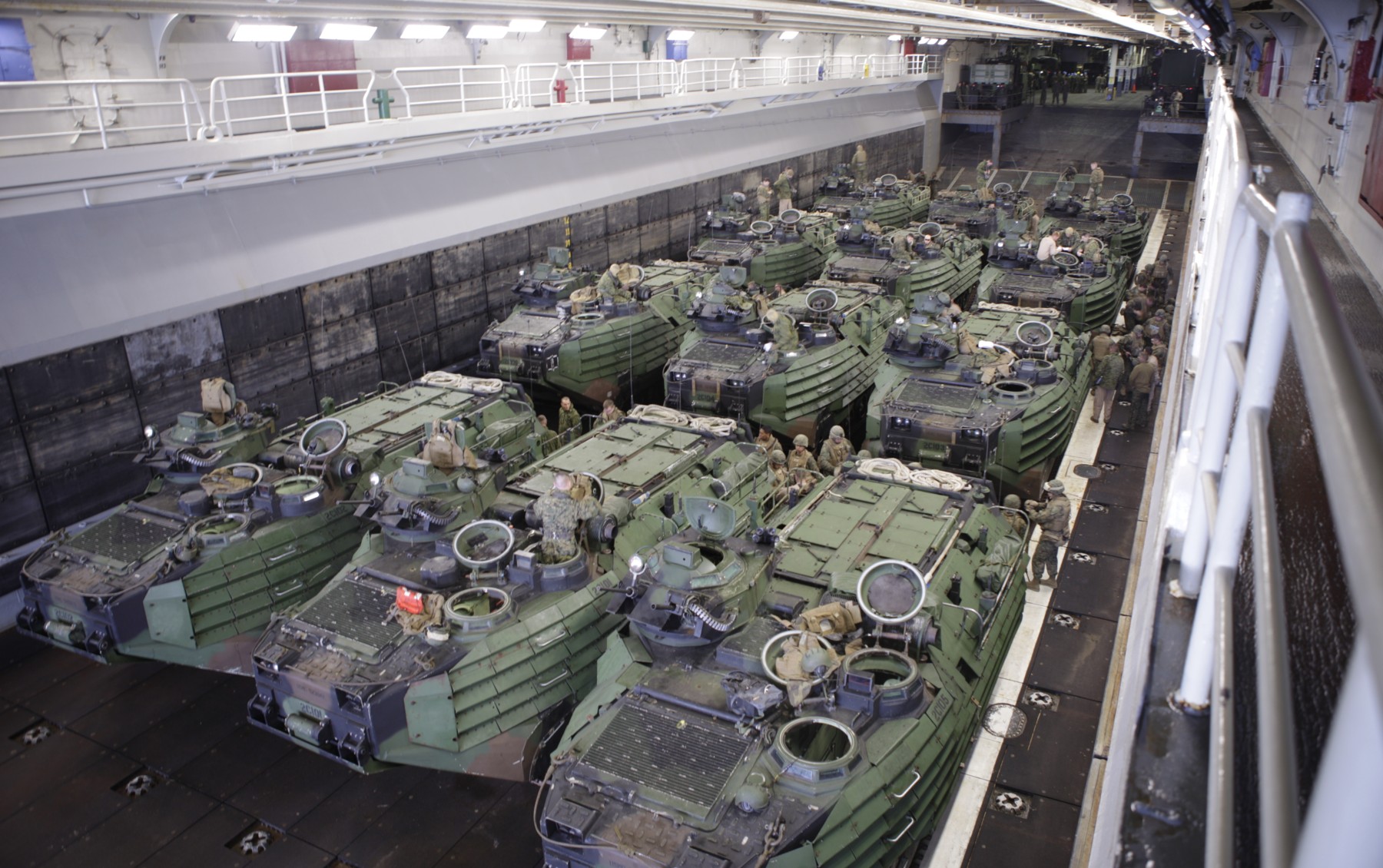 Amphibious Assault Vehicles (AAV) waiting in the well deck |
|
|
|
seaforces.org |
USN ships
start page | |